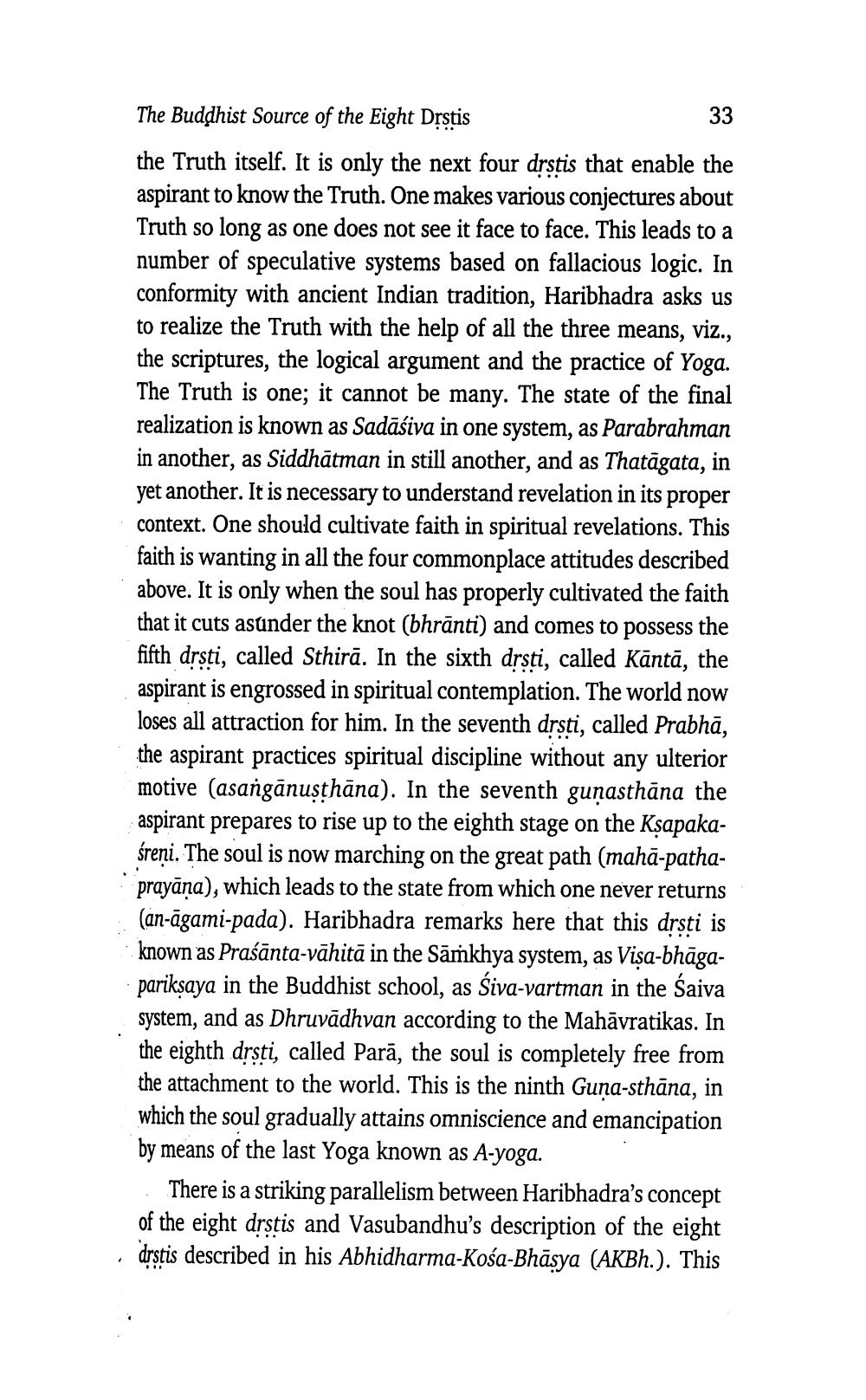________________
The Buddhist Source of the Eight Destis the Truth itself. It is only the next four drstis that enable the aspirant to know the Truth. One makes various conjectures about Truth so long as one does not see it face to face. This leads to a number of speculative systems based on fallacious logic. In conformity with ancient Indian tradition, Haribhadra asks us to realize the Truth with the help of all the three means, viz., the scriptures, the logical argument and the practice of Yoga. The Truth is one; it cannot be many. The state of the final realization is known as Sadāśiva in one system, as Parabrahman in another, as Siddhātman in still another, and as Thatāgata, in yet another. It is necessary to understand revelation in its proper context. One should cultivate faith in spiritual revelations. This faith is wanting in all the four commonplace attitudes described above. It is only when the soul has properly cultivated the faith that it cuts asunder the knot (bhrānti) and comes to possess the fifth drsti, called Sthirā. In the sixth drsti, called Kāntā, the aspirant is engrossed in spiritual contemplation. The world now loses all attraction for him. In the seventh drsti, called Prabhā, the aspirant practices spiritual discipline without any ulterior motive (asangānusthāna). In the seventh guṇasthāna the aspirant prepares to rise up to the eighth stage on the Ksapakaśreņi. The soul is now marching on the great path (mahā-pathaprayāņa), which leads to the state from which one never returns (an-āgami-pada). Haribhadra remarks here that this drsti is known as Praśānta-vāhitā in the Samkhya system, as Vişa-bhāgapariksaya in the Buddhist school, as Śiva-vartman in the saiva system, and as Dhruvādhvan according to the Mahāvratikas. In the eighth drsti, called Parā, the soul is completely free from the attachment to the world. This is the ninth Guna-sthāna, in which the soul gradually attains omniscience and emancipation by means of the last Yoga known as A-yoga.
There is a striking parallelism between Haribhadra's concept of the eight drstis and Vasubandhu's description of the eight drstis described in his Abhidharma-Kośa-Bhāsya (AKBh.). This




